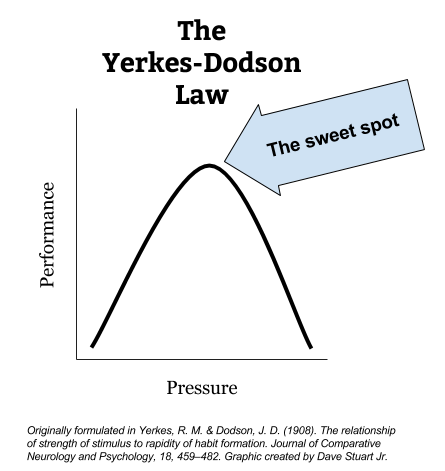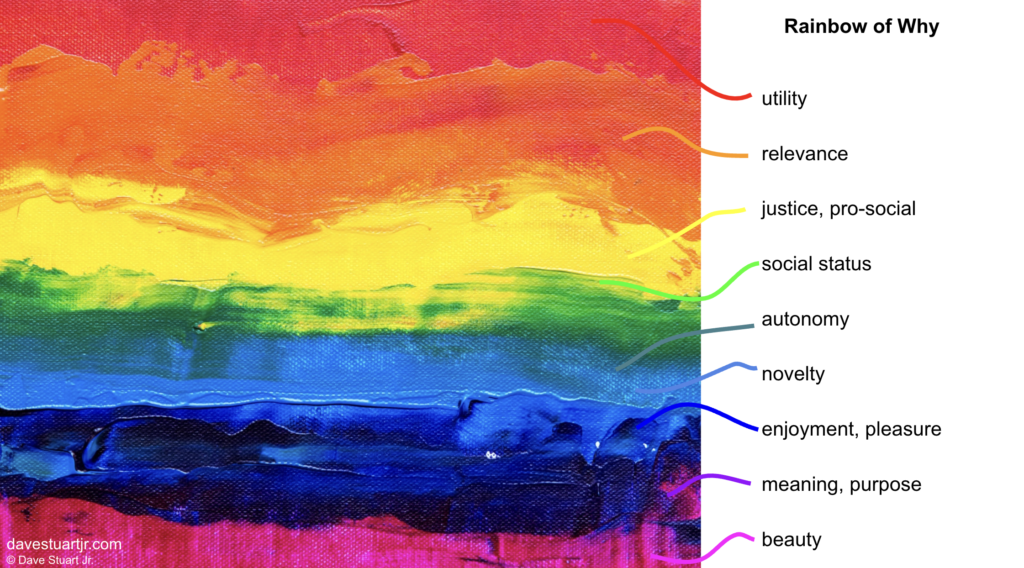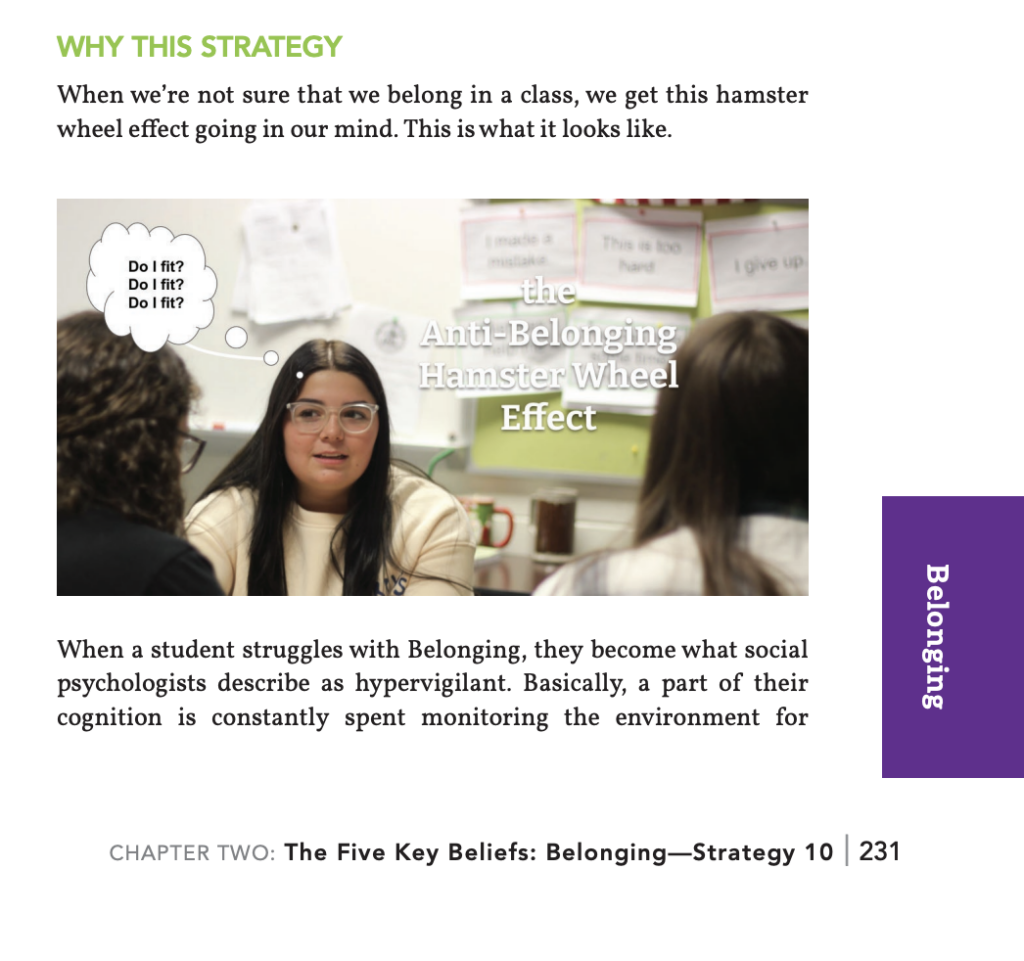Several years ago, I received a letter from a student whom we'll call Finn. It was one of those treats we get as teachers — an earnest note of appreciation.
All that I would like to do in today's article is unpack how the note describes changes in Finn's Five Key Beliefs. I'll share the letter, then the Five Key Beliefs pyramid, and then my footnotes on what the letter reveals.
Mr. Stuart, I wanted to say thank you for being my first AP teacher. I was so stressed about going into a high school [1], especially when so many of my classes were advanced. It really helped me being able to laugh first thing in the morning [2]. I never really liked history [3] until I took your class. I always thought it was boring, and, frankly, dumb. [4] While I might not need to know that Rome collapsed in 476 it's still really fun to learn about [5] especially when you have a teacher that actually likes what they're teaching. [6] I used to feel out of place in higher classes, especially once we started learning things but I feel like I'm supposed to be in your classroom. There's no awkwardness or doubt that I'm in the right place. [7] Having a classroom feel at home is one of the greatest feelings. [8]

[1] I was so stressed about going into a high school.
It's easy as an adult to forget that this stress is experienced as pain. It's not fun. And, according to Yerkes-Dodson, while some stress is good for enhancing human performance, too much is NOT. “No pain, no gain” is true, but so is “tons of pain, no gain.”

[2] It really helped me being able to laugh first thing in the morning.
I love this about teaching: I need not be a comedian to get my students to laugh. Why? Because they want to laugh, very badly, while they are in school. And so, often, it's just a bit of levity and a warm smile that can draw some laughter.
Also, in terms of the Five Key Beliefs, humor is most closely linked with Credibility and Value.
[3] I never really liked history.
Here we have more Value language. We can interpret this as, “My soul never really found an avenue toward Valuing history.” I did not experience enough of the colors on the Rainbow of Why (pictured below).

[4] I always thought [history] was boring, and, frankly, dumb.
“Boring” and “dumb” are from the lexicon of anti-Value. When our students bring this to us, we can meet this kind of language objectively, even gratefully. They are showing us what they believe, giving us insight into their hearts. Finn had not had enough experiences in history classes where history seemed useful (utility), or relevant, or enjoyable, or meaningful, or beautiful.
[5] While I might not need to know that Rome collapsed in 476 it's still really fun to learn about.
This is Value language. What she's saying here is that she found enjoyment in learning history — she grew to Value it not because it was useful (the top of the Rainbow of Why) but because it was enjoyable.
[6] Especially when you have a teacher that actually likes what they're teaching.
This is Credibility language. One of the most delightful ways to become more Credible as a teacher is to train your soul to enjoy the work of teaching. But I'm very serious with that word “train.” The soul must be trained to like the students, the content, and the challenging task of connecting the two. This is rarely inborn in a person; instead, it must be trained into us because teaching is hard.
[7] I used to feel out of place in higher classes, especially once we started learning things but I feel like I'm supposed to be in your classroom. There's no awkwardness or doubt that I'm in the right place.
This is a beautiful summary of what the Belonging belief is like for a student. “I used to feel out of place in higher classes” — how simply we can empathize! Humans want to fit; we want our social context to align with our identity. But then — height of heights — she began to feel that she belonged. She felt like she was “supposed” to be there. That's exactly what happens when Belonging clicks into place. In my book, I argue that before that happens in the heart of a student, it's like they have an active hamster on a wheel in their minds, wondering if everyone else knows that they don't belong.

[8] Having a classroom feel at home is one of the greatest feelings.
It is, indeed, one of the greatest feelings around. And this, colleague, is why you and I can be so confident in the value of what we offer — we offer one of the greatest feelings around.
Now there are a couple important things missing from Finn's letter.
As is often the case, our students see only a part of what we do. To help you see a fuller picture of what happened for Finn, let me make a few final points.
- In terms of the Effort belief, Finn does not describe how she grew strong as a strategic note-taker and how she benefitted from lots of writing-to-learn experiences. It's these abundant (and repetitive) opportunities to learn HOW to learn well that created the confidence I began to see in Finn around the end of Semester 1.
- In terms of the Efficacy belief, Finn does not describe her journey with difficult tests. It took several months for Finn to get used to the idea of not taking results personally and unpacking outcomes (Strategy 9 in my new book).
All right — I hope this article helped you better understand the Five Key Beliefs and the shifts we're after in our students.
Best,
DSJR
P.S. To check out my book on the Five Key Beliefs, click here.
Leave a Reply